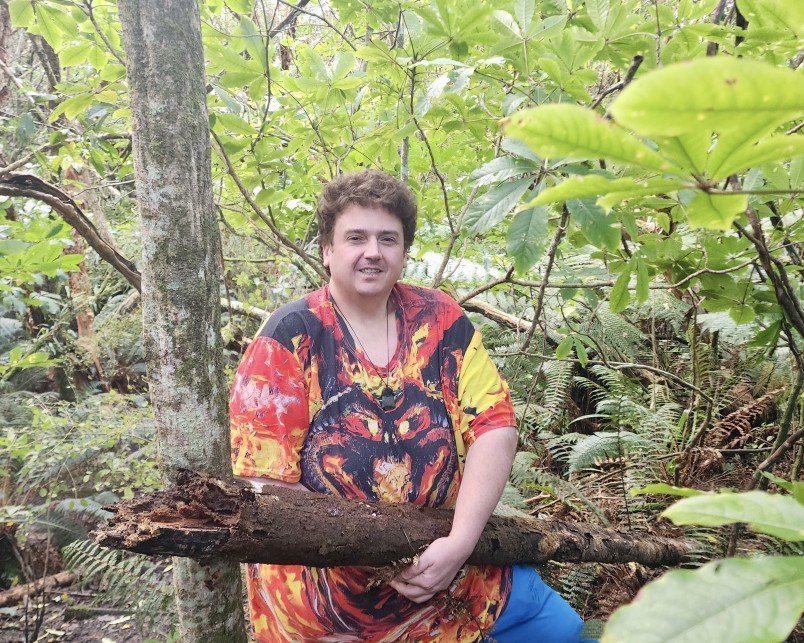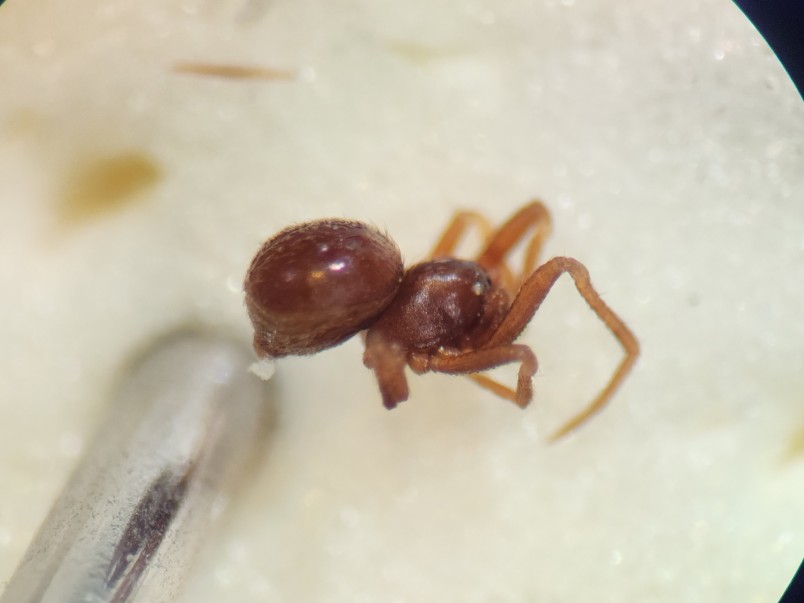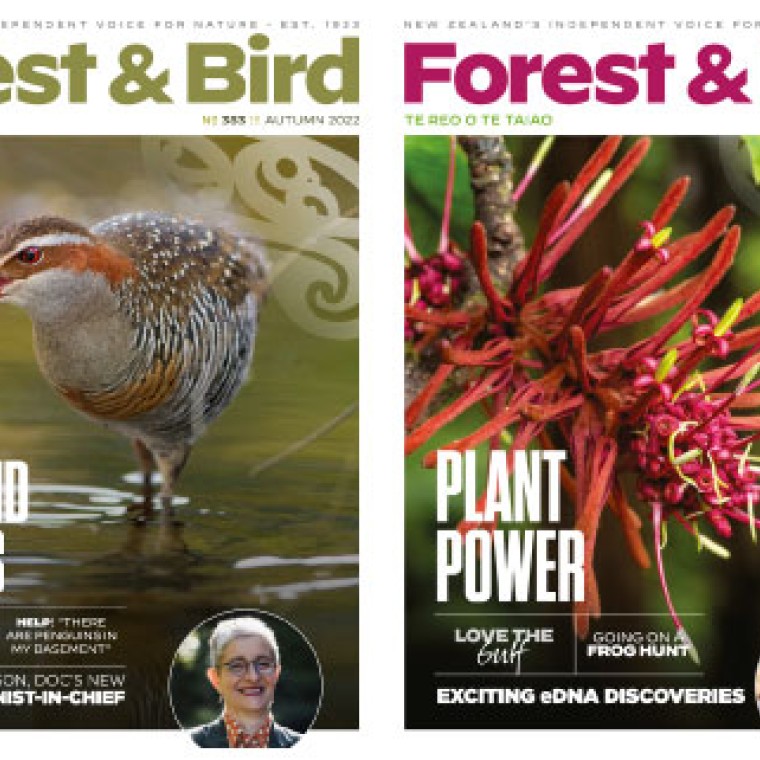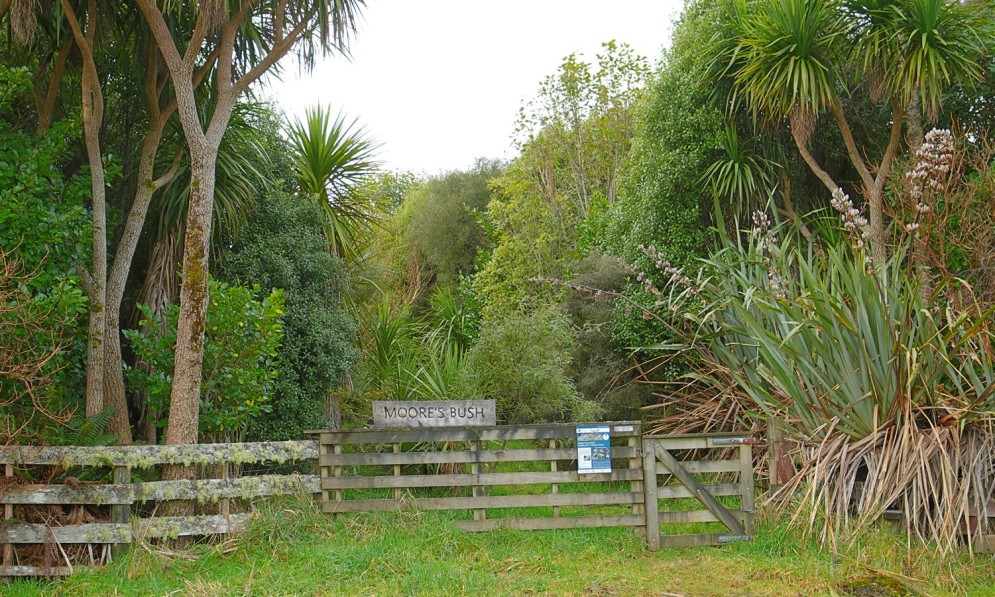Two exciting arachnid discoveries in a single day suggest Forest & Bird’s Moore’s Bush could be a micro-spider hotspot. By Caroline Wood
Forest & Bird magazine
A version of this story was first published in the Spring 2025 issue of Forest & Bird magazine.
Three years ago, Otago University PhD student James Crofts-Bennett (Kāi Tahu, Kāti Māmoe) sought permission to visit Forest & Bird’s Moore’s Bush, near Ōtepoti Dunedin, to search for spiders.
The reserve, a 10-minute drive from the city, was a favourite haunt of renowned arachnid experts Ray Forster and his wife Lynn, who between them discovered and named about 700 species, more than half the known diversity of New Zealand arachnid fauna.
Little did James know that he would go on to unearth not one but two new species of spiders in the forest leaf litter he collected and analysed in the lab.
He discovered a tiny orb-web spider (family Anapidae, possible new genus) and an undescribed comb-footed spider (family Theridiidae, genus Pholcomma).
“We have two micro-spiders unearthed from leaf litter collected at Moore’s Bush that are completely new to science,” said James.
“Historically, we’ve had Ray Forster combing Dunedin for spiders. There’s nearly a full century of extensive collecting, yet we’re still finding all this new stuff. It’s all very exciting!
“It’s becoming apparent the relatively damp conditions of Dunedin’s various bush and forest habitats provide a sanctuary for a wide variety of micro-arachnids and is a bit of a hotspot for Anapidae diversity,” added James.

James Crofts-Bennett at Moore’s Bush. Credit Janice Lord
Moore’s Bush is nestled in the beautiful Leith Valley, north of Ōtepoti. It was gifted to Forest & Bird in 1974 by local farmer Percy Moore, and our Dunedin Branch volunteers have been restoring the land for more than half a century.
The 4ha nature reserve has been turned from a dairy farm into native bush and is home to a variety of birds, freshwater fish, crayfish, and invertebrates. The branch was thrilled to hear about the spider discoveries, which James shared with them earlier this year.
These species are so tiny (just 0.75mm–1.2mm in length), you won’t ever knowingly come across them in the wild.
The male tiny orb-web spider found at Moore’s Bush has an immensely elongated embolus that coils twice over around the palpus (a leg-like appendage used for reproduction).
“As it currently stands, we have no idea where to place this species in the current fauna. We suspect a new genus at this point, but a female sample would greatly improve our analysis,” added James.

Comb-footed spider (Pholcomma) specimen. Credit James Crofts-Bennett
Inspired by the massive Forster spider collection held at Otago Museum, James set out to see whether modern collecting would provide similar results to those that Forster found during his lifetime (1922–2000). James is currently completing his PhD on the topic.
“Dunedin has benefited from a local desire to preserve and protect the realm of Tāne Mahuta. As a result, we appear to be an isolated oasis of natural diversity that is largely absent from the surrounding Otago area,” said James.
“I’m very grateful to Forest and Bird for letting me have a poke around Moore’s Bush.
“Your volunteers’ protection of this site – and willingness to let me visit and collect further – expands our wider knowledge of the lesser-known children of Tāne.”

